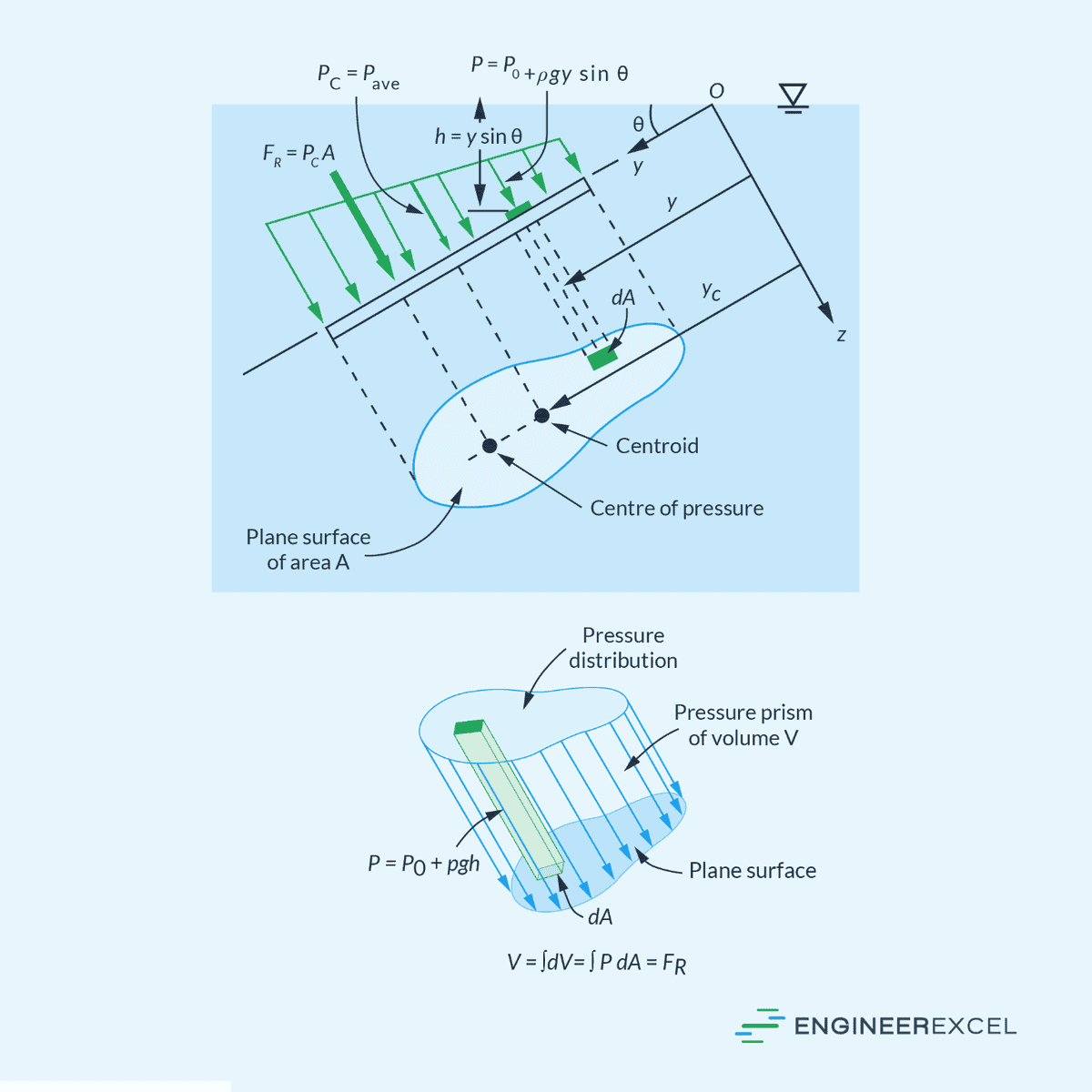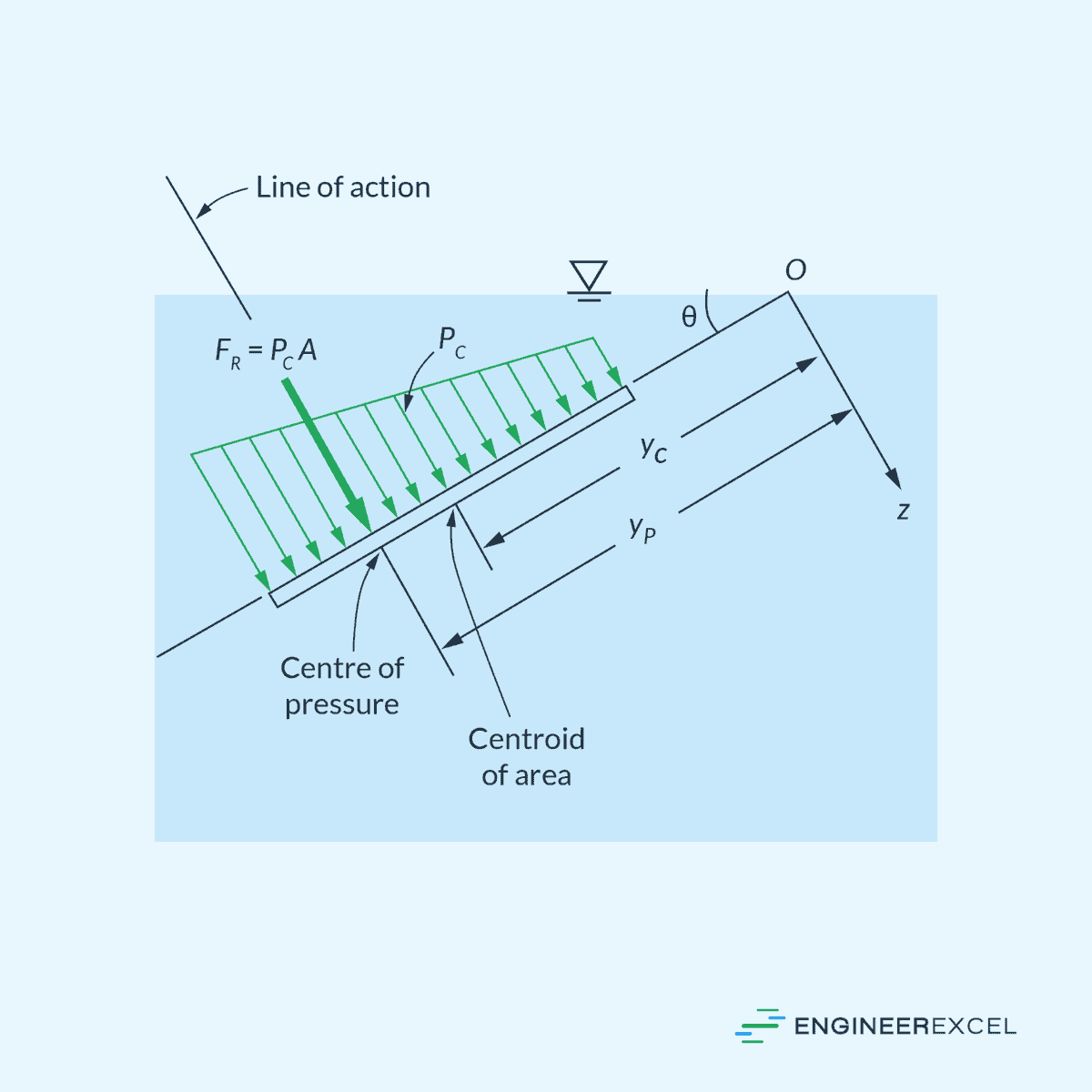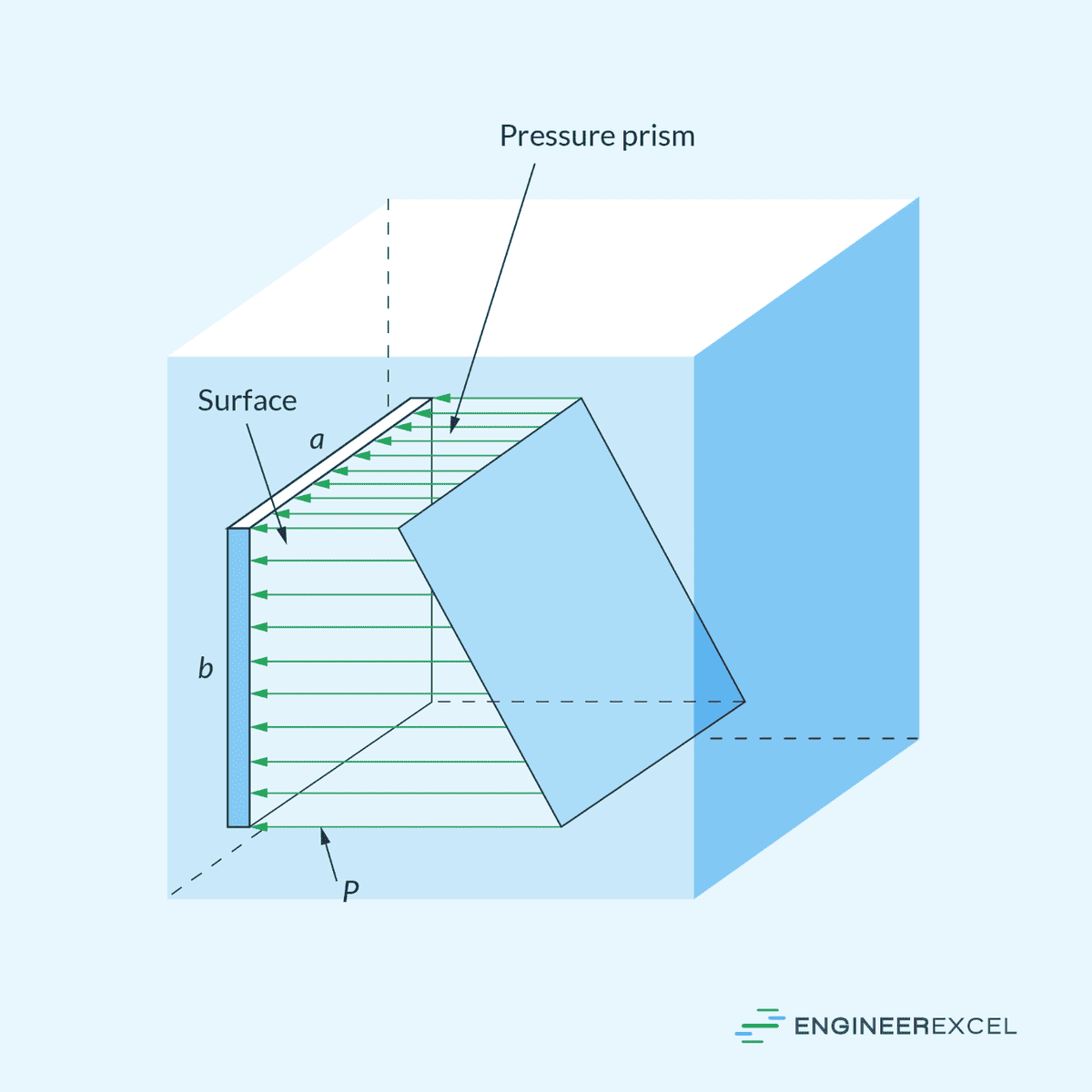In fluid statics, a pressure prism is a three-dimensional geometric representation of the pressure forces exerted on a submerged surface. It simplifies the analysis of fluid forces by providing a graphical method for determining the magnitude and distribution of pressure at various depths within a static fluid.

In this article, we will discuss the concept of pressure prism and how it can be used to determine the resultant hydrostatic force and its point of application on a submerged surface.
Understanding Pressure Prisms
Hydrostatic pressure refers to the pressure exerted by a fluid at equilibrium due to the force of gravity. It is uniform in all directions and increases linearly with depth in accordance to the following equation:


Elevate Your Engineering With Excel
Advance in Excel with engineering-focused training that equips you with the skills to streamline projects and accelerate your career.
Where:
- P = hydrostatic pressure [Pa]
- ρ = density of the fluid [kg/m3]
- g = acceleration due to gravity [9.81 m/s2]
- h = height of the liquid column above the point of measurement [m]
- Po = atmospheric pressure [101325 Pa]
For a submerged surface, the atmospheric pressure is usually ignored since it acts on both sides of the surface. Then, the hydrostatic pressure can be represented as a single resultant force whose magnitude is equal to:

Where:
- FR = hydrostatic resultant force [N]
- Pc = pressure at the centroid of the surface [Pa]
- A = surface area [m2]
In general, the line of action of the resultant force does not pass through the centroid of the surface. Instead, it lies underneath where the pressure is higher, as shown in the diagram below.

As shown in the diagram above, the center of pressure is the point of intersection of the line of action of the resultant force and the surface. Its vertical location can be determined by equating the moment of the resultant force to the moment of the distributed pressure force about the x-axis. However, a more straightforward method to determine the magnitude of the resultant force and its point of application is through a graphical method known as pressure prisms.

A pressure prism is a three-dimensional geometric representation of the pressure forces exerted on a submerged surface. It takes the form of a right-angled prism, where the base area is equivalent to the submerged surface area and the height corresponds to the pressure at a specific depth.
The volume of the pressure prism is equal to the magnitude of the resultant hydrostatic force acting on the plate. Additionally, the line of action of this force passes through the centroid of the prism, and when projected onto the plate, it passes through the center of pressure. Therefore, by using the concept of pressure prism, describing the resultant hydrostatic force on a plane surface becomes a matter of finding the volume and the two coordinates of the centroid of this pressure prism.
This tool simplifies the analysis of fluid forces, making it possible to calculate the resultant hydrostatic force acting on structures like dam walls or ship hulls. The concept is based on the isotropic nature of pressure at a point within a fluid at rest.
Applications Of Pressure Prism
The concept of pressure prisms is integral in the analysis of static fluid pressure and the mechanical behavior of structures under pressure.
Fluid Mechanics
In fluid mechanics, pressure prisms assist in determining the magnitude and distribution of pressure at any point within a static fluid.

It is used to visualize how pressure increases with depth due to gravity, depicted as a linear increase in a pressure-depth diagram. For example, engineers apply this concept to calculate buoyant forces when designing submerged structures.
Civil Engineering
In civil engineering, pressure prisms are employed to analyze forces exerted by fluids on structures like dams or retaining walls. They are vital in ensuring these structures can withstand the hydrostatic pressure applied by the adjacent fluid bodies. The geometric shape of the pressure prism enables the calculation of resultant force and its point of application, essential for stability analyses.
Mechanical Engineering
In mechanical engineering, pressure prisms are used in the analysis of stress on thin-walled pressure vessels. Such applications are critical to ensure safety and integrity of vessels under internal or external pressure. The concept is fundamental when performing stress analysis on cylindrical and spherical vessels to determine if a design can tolerate the working pressure it is expected to encounter.
Example Problem
Problem: A rectangular plate is vertically submerged 1 meter below the water surface. If the width (a) of the plate is 3 meters and the height (b) is 2 meters, what is the resultant hydrostatic force acting on the plate? Ignore atmospheric pressure and assume that the density of water is 1000 kg/m3.

Solution:
In order to find the resultant hydrostatic force using pressure prism method, we first need to find the minimum and maximum hydrostatic pressures at the top and bottom edges of the plate. At the top edge, the hydrostatic pressure is given by:

At the bottom edge, the hydrostatic pressure is given by:

Now that we know all the dimensions of the pressure prism, we can find the resultant force by calculating its volume:

Therefore, the resultant hydrostatic force is 117.7 kN.
